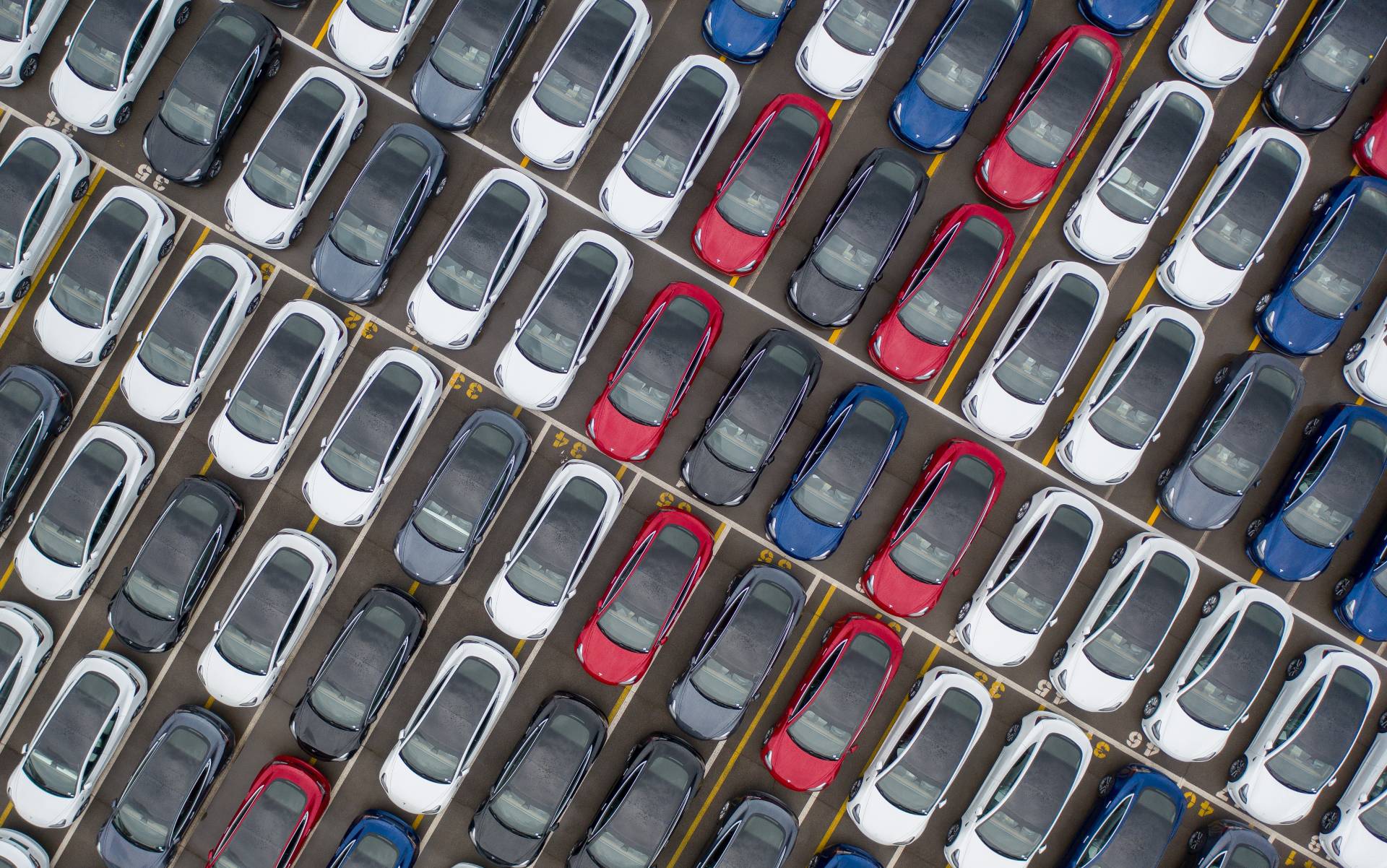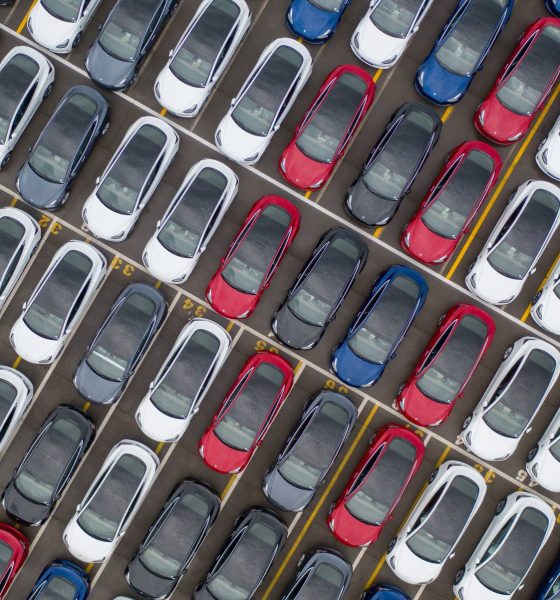Tesla dominated various European markets in 2023 as the company is evidently the main driver behind a continuous increase in electric vehicle market share on the continent.
This morning, Tesla reported its delivery and production figures for 2023, which showed it had successfully achieved its 1.8 million unit goal for the year. It was the automaker’s most successful campaign yet, and driven by heavy market share leads in the United States and Europe, Tesla is in a prime position to once again dominate the landscape in those two areas.
Although it was outpaced in China by BYD, Tesla has nothing to hang its head about. Europe was a classic case of domination by the automaker in 2023, and data from EU-EVs, which tracks registration figures for various countries in the EU, shows it was not very close.
United Kingdom
Tesla owned 15.3 percent of the market share in the United Kingdom, outpacing MG and BMW by more than 6 percent.
The Model Y was the country’s biggest seller, as 34,334 total registrations were tracked by EU-EVs. The MG4 from MG was second, with 20,129. The Model 3 landed in fourth place with 12,774 registrations.
Norway
Norway was a major hotspot for Tesla, as it landed 23.6 percent of the total market share and, once again, the Model Y was the biggest seller. It was not very close.
The Model Y’s 23,058 tracked registrations outpaced the ID.4 from Volkswagen by nearly four times, as the all-electric crossover from the German company had 6,336 registrations.
Tesla dominates in EV-heavy Norway where gas cars are nearly defunct
The Model 3 fell outside the top 10 with only 2,081 registrations for the year, further hammering home the point that CEO Elon Musk made years ago that the Model Y would overtake the Model 3 in sales.
Netherlands
The Model Y led Tesla to more domination in the Netherlands, as 13,714 registrations helped the company land 17 percent of the total EV market share.
Tesla led BMW (8.3%) and Volkswagen (8%), and the Volvo XC40 was the second best-seller with 6,309 units registered.
Spain
Tesla Model Y and Model 3 led sales figures for EVs in Spain and contributed to a 22 percent market share held by the automaker in 2023. The Model Y’s 6,843 units and the Model 3’s 6,123 units largely contributed to Tesla’s 13,260 units delivered in Spain last year.
If you were to combine the sales of the third-place MG4 and fourth-place Dacia Spring, you still would not have enough sales to eclipse either the Model Y or Model 3.
Sweden
With all of the headlines surrounding Tesla and Sweden toward the end of 2023, one might think that the automaker would not have held the market share lead in the country.
However, Tesla managed to outpace Volkswagen by over 2 percent. Tesla held 17.4 percent of the EV market share in 2023, with Volkswagen holding 15.1 percent, giving the German company a strong showing in highly competitive Sweden.
The Model Y held the lead with 16,576 units registered, and the ID.4 followed up with 11,009. Volvo trailed Tesla and VW with 10.7 percent, as the XC40 managed to take third in overall sales.
Denmark
Denmark was Tesla’s strongest performance across the countries tracked by EU-EVs, with a massive 34.5 percent market share holding, outpacing Volkswagen in second place by a substantial margin. VW held 10.5 percent of the market in Denmark, good enough for second place.
The Model Y dominated the market with 17,975 units registered, beating out the second place Model 3, which had 4,216 units sold and registered last year.
Tesla sold 22,366 EVs in Denmark last year. The entire country registered 64,781.
I’d love to hear from you! If you have any comments, concerns, or questions, please email me at joey@teslarati.com. You can also reach me on Twitter @KlenderJoey, or if you have news tips, you can email us at tips@teslarati.com.

Elon Musk
Starlink passes 9 million active customers just weeks after hitting 8 million
The milestone highlights the accelerating growth of Starlink, which has now been adding over 20,000 new users per day.

SpaceX’s Starlink satellite internet service has continued its rapid global expansion, surpassing 9 million active customers just weeks after crossing the 8 million mark.
The milestone highlights the accelerating growth of Starlink, which has now been adding over 20,000 new users per day.
9 million customers
In a post on X, SpaceX stated that Starlink now serves over 9 million active users across 155 countries, territories, and markets. The company reached 8 million customers in early November, meaning it added roughly 1 million subscribers in under seven weeks, or about 21,275 new users on average per day.
“Starlink is connecting more than 9M active customers with high-speed internet across 155 countries, territories, and many other markets,” Starlink wrote in a post on its official X account. SpaceX President Gwynne Shotwell also celebrated the milestone on X. “A huge thank you to all of our customers and congrats to the Starlink team for such an incredible product,” she wrote.
That growth rate reflects both rising demand for broadband in underserved regions and Starlink’s expanding satellite constellation, which now includes more than 9,000 low-Earth-orbit satellites designed to deliver high-speed, low-latency internet worldwide.
Starlink’s momentum
Starlink’s momentum has been building up. SpaceX reported 4.6 million Starlink customers in December 2024, followed by 7 million by August 2025, and 8 million customers in November. Independent data also suggests Starlink usage is rising sharply, with Cloudflare reporting that global web traffic from Starlink users more than doubled in 2025, as noted in an Insider report.
Starlink’s momentum is increasingly tied to SpaceX’s broader financial outlook. Elon Musk has said the satellite network is “by far” the company’s largest revenue driver, and reports suggest SpaceX may be positioning itself for an initial public offering as soon as next year, with valuations estimated as high as $1.5 trillion. Musk has also suggested in the past that Starlink could have its own IPO in the future.
News
NVIDIA Director of Robotics: Tesla FSD v14 is the first AI to pass the “Physical Turing Test”
After testing FSD v14, Fan stated that his experience with FSD felt magical at first, but it soon started to feel like a routine.

NVIDIA Director of Robotics Jim Fan has praised Tesla’s Full Self-Driving (Supervised) v14 as the first AI to pass what he described as a “Physical Turing Test.”
After testing FSD v14, Fan stated that his experience with FSD felt magical at first, but it soon started to feel like a routine. And just like smartphones today, removing it now would “actively hurt.”
Jim Fan’s hands-on FSD v14 impressions
Fan, a leading researcher in embodied AI who is currently solving Physical AI at NVIDIA and spearheading the company’s Project GR00T initiative, noted that he actually was late to the Tesla game. He was, however, one of the first to try out FSD v14.
“I was very late to own a Tesla but among the earliest to try out FSD v14. It’s perhaps the first time I experience an AI that passes the Physical Turing Test: after a long day at work, you press a button, lay back, and couldn’t tell if a neural net or a human drove you home,” Fan wrote in a post on X.
Fan added: “Despite knowing exactly how robot learning works, I still find it magical watching the steering wheel turn by itself. First it feels surreal, next it becomes routine. Then, like the smartphone, taking it away actively hurts. This is how humanity gets rewired and glued to god-like technologies.”
The Physical Turing Test
The original Turing Test was conceived by Alan Turing in 1950, and it was aimed at determining if a machine could exhibit behavior that is equivalent to or indistinguishable from a human. By focusing on text-based conversations, the original Turing Test set a high bar for natural language processing and machine learning.
This test has been passed by today’s large language models. However, the capability to converse in a humanlike manner is a completely different challenge from performing real-world problem-solving or physical interactions. Thus, Fan introduced the Physical Turing Test, which challenges AI systems to demonstrate intelligence through physical actions.
Based on Fan’s comments, Tesla has demonstrated these intelligent physical actions with FSD v14. Elon Musk agreed with the NVIDIA executive, stating in a post on X that with FSD v14, “you can sense the sentience maturing.” Musk also praised Tesla AI, calling it the best “real-world AI” today.
News
Tesla AI team burns the Christmas midnight oil by releasing FSD v14.2.2.1
The update was released just a day after FSD v14.2.2 started rolling out to customers.

Tesla is burning the midnight oil this Christmas, with the Tesla AI team quietly rolling out Full Self-Driving (Supervised) v14.2.2.1 just a day after FSD v14.2.2 started rolling out to customers.
Tesla owner shares insights on FSD v14.2.2.1
Longtime Tesla owner and FSD tester @BLKMDL3 shared some insights following several drives with FSD v14.2.2.1 in rainy Los Angeles conditions with standing water and faded lane lines. He reported zero steering hesitation or stutter, confident lane changes, and maneuvers executed with precision that evoked the performance of Tesla’s driverless Robotaxis in Austin.
Parking performance impressed, with most spots nailed perfectly, including tight, sharp turns, in single attempts without shaky steering. One minor offset happened only due to another vehicle that was parked over the line, which FSD accommodated by a few extra inches. In rain that typically erases road markings, FSD visualized lanes and turn lines better than humans, positioning itself flawlessly when entering new streets as well.
“Took it up a dark, wet, and twisty canyon road up and down the hill tonight and it went very well as to be expected. Stayed centered in the lane, kept speed well and gives a confidence inspiring steering feel where it handles these curvy roads better than the majority of human drivers,” the Tesla owner wrote in a post on X.
Tesla’s FSD v14.2.2 update
Just a day before FSD v14.2.2.1’s release, Tesla rolled out FSD v14.2.2, which was focused on smoother real-world performance, better obstacle awareness, and precise end-of-trip routing. According to the update’s release notes, FSD v14.2.2 upgrades the vision encoder neural network with higher resolution features, enhancing detection of emergency vehicles, road obstacles, and human gestures.
New Arrival Options also allowed users to select preferred drop-off styles, such as Parking Lot, Street, Driveway, Parking Garage, or Curbside, with the navigation pin automatically adjusting to the ideal spot. Other refinements include pulling over for emergency vehicles, real-time vision-based detours for blocked roads, improved gate and debris handling, and Speed Profiles for customized driving styles.










